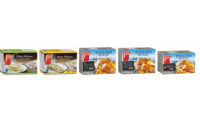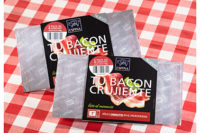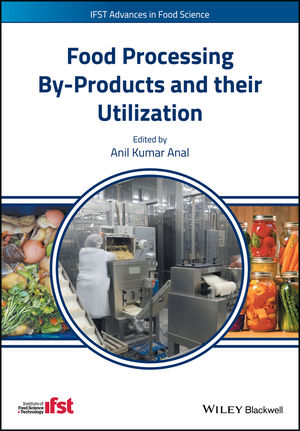Microwavable packaging puts dinner on the table faster than stovetop or oven preparation by saving both prep and clean-up time. For today’s time-starved consumers, it’s the answer to serving family meals without spending hours in the kitchen.
With so many convenience benefits, it’s not surprising the global market for microwave packaging is expanding at a 4.4 percent compound annual growth rate and projected to be valued at $136,305 million by 2023, according to The Global Microwavable Foods Market, a report published by Allied Market Research.
Shelf-stable, refrigerated and frozen meals containing beef, pork, poultry or seafood are increasingly popular. Frozen products dominate, but several recent product introductions feature refrigerated products. Not only are these foods convenient, but microwavable products score nutritional points because preparation does not add fat. According to the report, other global market drivers include the growth of nuclear families, more women working outside the home, increases in disposable income and standards of living and a rapid expansion in the number of large retail chains.
Microwavable packaging formats include cartons, lidded trays, cups/bowls and pouches/bags, sometimes equipped with patterned susceptor, or self-venting, technology.
One potential downside of microwavable packaging is plastic dominates. A backlash against plastic, especially single-use plastic, seems to be growing because of widespread publicity about plastic waste clogging the oceans and the fact that most plastic is derived from non-renewable resources. To counter the negative aspects of plastic, Conagra Brands launched its Healthy Choice Power Bowls in plant-based bowls. Plant-based packaging scores environmental points due to its renewable source and may be recyclable in paper or milk carton streams.
The Healthy Choice Power Bowls are sealed with a tabbed, printed film/paper laminate that is self-venting. The front of the carton announces, “Serving bowl made from plant-based fiber.” Recycling instructions on the back note the bowl can be recycled if clean and dry. Internationally influenced recipes feature all-natural meat ingredients. Launched in 2017, the four initial flavors, Adobo Chicken, Korean-Inspired Beef, Cuban-Inspired Pork and Chicken Sausage and Barley proved to be so popular that grain-free and breakfast flavors have been added to expand the line-up to 15.
Another frozen meal introduction in a plant-based container, frozen José Olé Burrito Bowls, distributed by Ajinomoto Foods North America, rely on an oval paperboard canister and friction-fit lid consisting of a plastic ring with a paperboard center. The bowl is microwaved 4.5 minutes with the lid on and the meal is ready to eat after two minutes of standing time.
We’re also seeing paperboard packaging in the refrigerator case with introductions such as Jimmy Dean’s Simple Scrambles. The quick breakfast meals feature eggs and meat/cheese mix-ins, which are separately packaged and housed in a dual-wall insulated paperboard cup sealed with printed film. To prepare, the consumer peels off the tabbed lidstock and removes a small, sealed polypropylene cup holding two pasteurized eggs and a printed, clear pouch of mix-ins. After shaking to thoroughly mix, the tabbed foil laminate lidstock is removed and the eggs are poured into the paperboard cup and microwaved for 50 seconds. The mix-ins are stirred in, and the cup is returned to the microwave for another 25-45 seconds or until the eggs are fully cooked. Breakfast is ready after one minute of standing time. Flavors include Sausage, Meat Lovers, Bacon, Three Cheese and Turkey Sausage. Reaction from consumers has been positive with scores of 4.3 out of 5 for taste and 4.5 for convenience.
Steam cooking with self-venting packaging, commonly seen in the freezer case, also is gaining ground for refrigerated products. Ready meals such as Meat and Vegetable Stew, Wild Rice with Beef and Sausage and Cabbage from Miratorg, Russia’s biggest producer of meat, steam cook in a lidded tray with a valve that whistles when the food is ready. The lineup, now with approximately 20 flavors, has proven to be so popular, a larger and smaller tray size has been added and the company is considering expanding distribution beyond Moscow.
This valved packaging concept also is being used by Clover in South Africa for its Whistling Chef ready meals, which include Beef Lasagne, that offer a 30-day, preservative-free refrigerated shelf life.
Susceptor packaging was chosen for Raybern’s Grilled Melts, which feature bread, cheese and various meats. Each sandwich is enclosed in a patterned susceptor pouch. After opening both ends, the pouch is placed in the microwave for three minutes. The susceptor toasts the bread as the contents warm. Flavors include 3 Amigos, The Scapegoat, The BMC, Stay Cheesy!, Mr. Italiano and Let There Be Pork.
Other microwavable packaging innovations include a dual-chamber bag, which releases herbs and spices at the proper point in the cooking process to ensure a perfectly seasoned dish. Completely self-contained, there’s no need for the cook to do anything beyond placing the bag in the microwave and setting the timer. Now that’s convenient. NP









